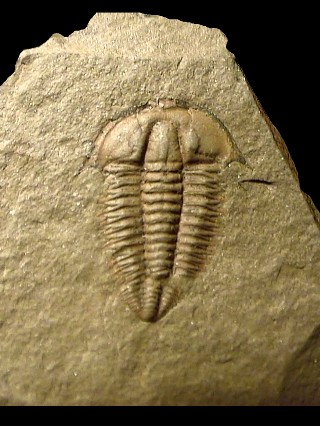
Specimen description :
- Positive.
- Prone on matrix.
- Complete specimen, with a slight dissociation of the pygidium to the left.
- Total size : 18 mm.
- Middle Cambrian (-525 Ma).
- Upper part of the Glossopleura Zone, Chisholm Shale.
- Pioche, Nevada, USA.

Piochaspis sellata
Piochaspis sellata is a rather uncommon trilobite from the Middle Cambrian of Nevada. This page is a complement to Alokistocaride n.sp., aff. Piochaspis. The holotype has been described by R. Levi-Setti, 1993, in "Trilobites, second edition". The University of Chicago Press, .
.
|
|
Specimen description :
|
|
|
Positive part..
|
B&W contrast enhanced positive.
|
Diagnosis :
|
Order
|
Ptychopariida
|
SWINNERTON 1915
|
A large, heterogenous order, with
classification problems. Occurence : Cambrian to Upper Ordovician.
|
|
Suborder
|
Ptychopariina
|
RICHTER 1933
|
Paraphyletic primitive Ptychopariida, a large and extremely plesiomorphic group.
|
|
Superfamily
|
Ptychoparioidea |
MATTHEW 1887
|
Occurence : Cambrian to Ordovician. Forms with oval, elongate, exosqueleton.
|
|
Family |
Alokistocaridae |
RESSER 1939 |
Occurence : Lower Cambrian to Upper Cambrian.
|
|
Genus |
Piochaspis |
LEVI-SETTI 1975 |
|
|
Species
|
sellata |
LEVI-SETTI 1975
|
Reference specimen : the holotype presented by R. LEVI-SETTI.
 |
 |
|
|